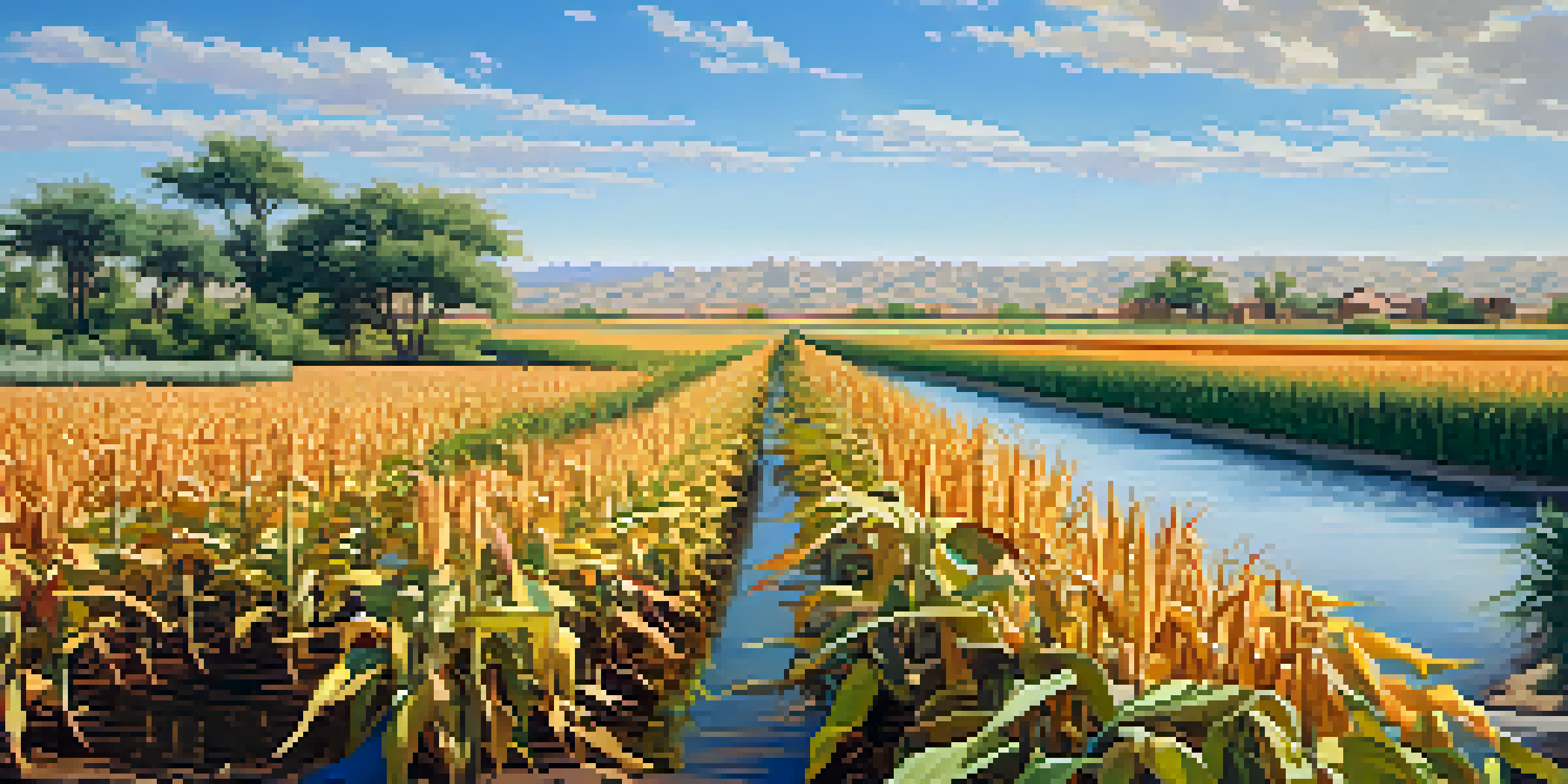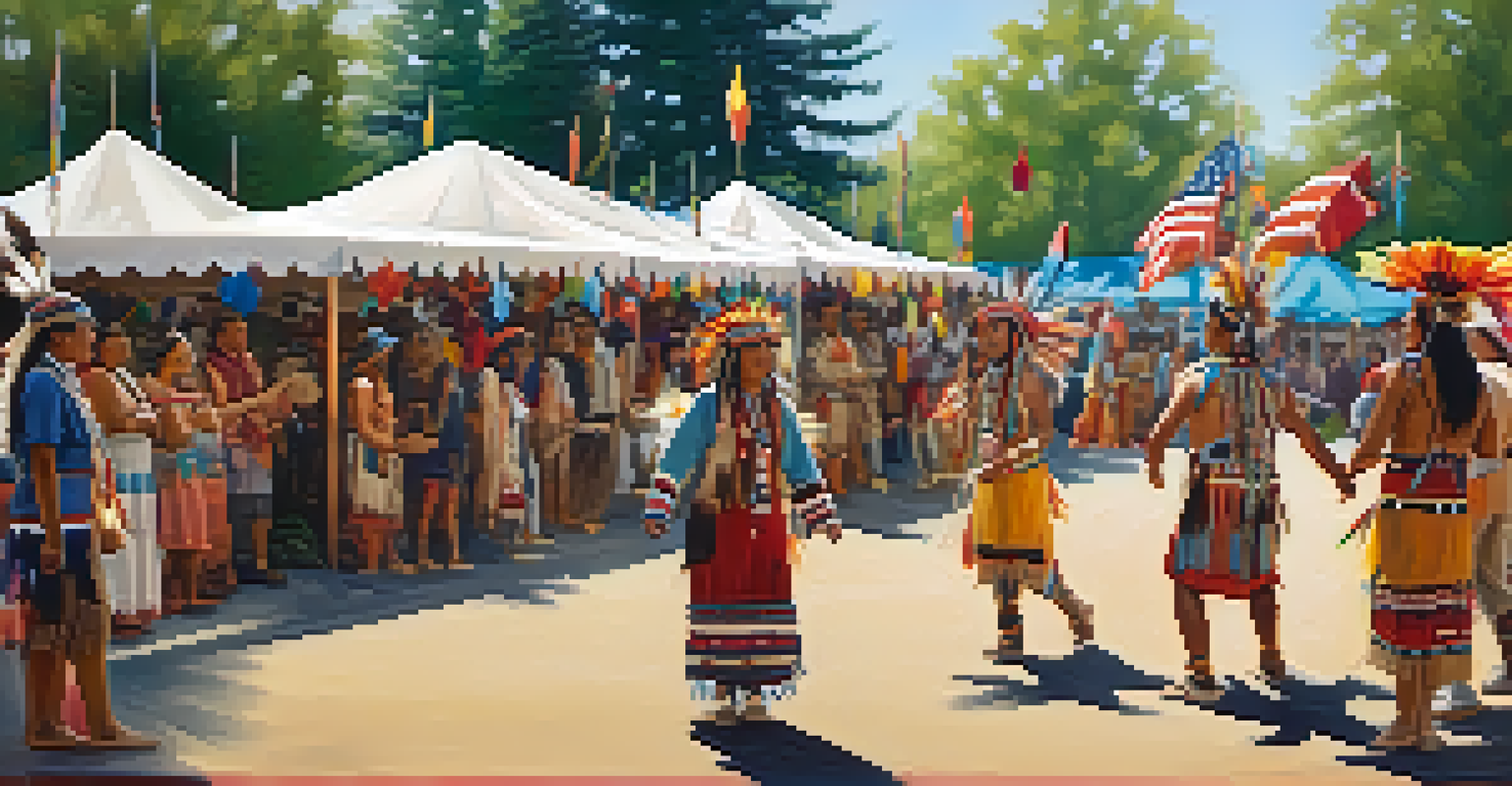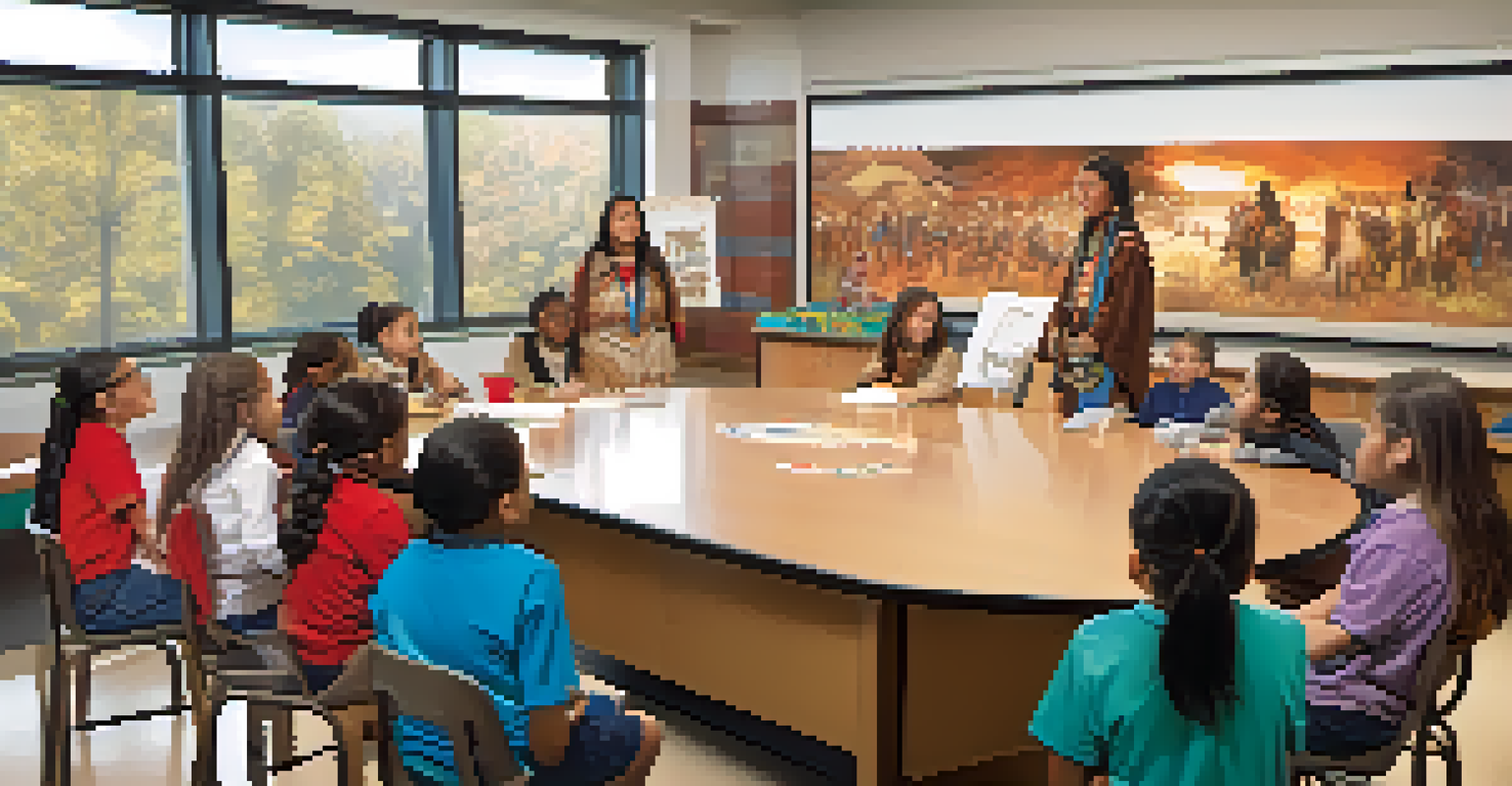The Founding of Phoenix: A Native American Perspective

Understanding Phoenix's Native American Roots
Before the modern city of Phoenix emerged, the region was home to various Native American tribes, primarily the Hohokam. These indigenous people thrived in the arid landscape, demonstrating remarkable adaptability through advanced irrigation techniques. Their ability to cultivate crops like corn and beans laid the foundation for a vibrant culture that existed for centuries.
We do not inherit the earth from our ancestors; we borrow it from our children.
The Hohokam’s intricate canal systems not only supported agriculture but also fostered community. This interconnectedness allowed them to gather for trade, ceremonies, and social events, creating a rich tapestry of life that shaped the region long before European settlers arrived. Understanding this history is crucial to appreciating the cultural significance of the area.
While the Hohokam civilization eventually declined, their legacy influenced later tribes and the development of the Phoenix area. As we examine the founding of Phoenix, it's important to recognize these indigenous contributions and their lasting impact on the city’s identity.
The Arrival of European Settlers in Phoenix
In the mid-19th century, European settlers began arriving in the Phoenix area, drawn by the promise of land and opportunity. The contrast between their farming practices and the traditional methods of the Native Americans marked a significant turning point in the region’s history. Unlike the Hohokam, many settlers relied on different agricultural techniques, which often disregarded the existing ecological balance.

The settlers' arrival brought profound changes, including the establishment of new towns and infrastructure. With the construction of the Arizona Canal, settlers aimed to replicate the Hohokam’s success but often overlooked the deep-rooted knowledge of the land held by Native peoples. This disconnect would lead to tensions over land use and water rights that persist even today.
Native American Heritage in Phoenix
The rich history of Native American tribes, especially the Hohokam, significantly shaped the cultural landscape of Phoenix long before European settlers arrived.
This period of transition highlights the complexities of cultural exchange and conflict. As Phoenix grew, the original inhabitants faced increasing pressure, forcing them to adapt to new realities while striving to preserve their heritage amidst rapid change.
Cultural Resilience of Native American Tribes
Despite the challenges posed by European settlement, Native American tribes in the Phoenix area demonstrated remarkable resilience. They adapted their lifestyles, integrating aspects of settler culture while maintaining their traditions. This adaptability is evident in the continued importance of ceremonies, storytelling, and community gatherings that celebrate their heritage.
The land is not just the ground beneath our feet; it is our identity, our culture, and our future.
Tribes like the Salt River Pima-Maricopa Indian Community and the Gila River Indian Community have worked tirelessly to preserve their languages, arts, and customs. By fostering a sense of identity and belonging, these communities help ensure that their history is not lost, even in a modern urban landscape.
The cultural resilience of these tribes serves as a testament to their strength and commitment to their roots. Sharing their stories and traditions enriches the broader narrative of Phoenix, reminding us that this city is built on a foundation that honors both its indigenous past and its diverse present.
Land and Water Rights: A Continued Struggle
The founding of Phoenix was not just a tale of opportunity; it also involved complex issues of land and water rights. As the city expanded, conflicts arose between settlers and Native American tribes over access to these essential resources. This struggle continues today, highlighting the ongoing need for dialogue and understanding.
Historical treaties often left Native tribes at a disadvantage, leading to legal battles that have spanned generations. For instance, the Gila River Indian Community has fought to secure water rights essential for their agriculture and economic development. These disputes underscore the importance of recognizing indigenous rights and ensuring they are respected in contemporary governance.
Ongoing Struggles for Rights
Conflicts over land and water rights continue to affect Native American communities in Phoenix, highlighting the need for dialogue and recognition of indigenous rights.
Addressing these issues is vital for fostering a more equitable relationship between Native communities and the city of Phoenix. By acknowledging the historical injustices and working toward resolution, we can create a more inclusive narrative that honors all voices in the region.
The Role of Native American Voices in Modern Phoenix
In contemporary Phoenix, Native American voices play a crucial role in shaping the city's cultural landscape. Artists, leaders, and community members contribute to public discourse, showcasing their heritage through various mediums, from art to education. This visibility helps bridge the gap between cultures and fosters greater understanding among residents.
Events such as the Phoenix Indian Center's annual gatherings celebrate Native American culture, providing a platform for cultural exchange and dialogue. These events not only honor traditions but also create opportunities for collaboration and community building. By engaging with the broader population, Native Americans in Phoenix can share their stories and educate others about their rich history.
The active participation of Native communities in the city's cultural life enhances Phoenix’s diversity. Embracing this multifaceted identity allows all residents to appreciate the deep roots that Native American tribes have in the area, enriching the narrative of what it means to live in Phoenix today.
Education and Awareness of Native Heritage
Education plays a pivotal role in fostering understanding and respect for Native American history. Schools and organizations in Phoenix are increasingly incorporating Native perspectives into their curricula, helping students appreciate the region's rich heritage. This shift encourages younger generations to learn about the contributions and struggles of indigenous peoples.
Programs like the Phoenix Indian Center's educational initiatives aim to bridge cultural gaps and promote awareness. By offering workshops, cultural events, and storytelling sessions, these programs provide valuable insights into Native American traditions and contemporary issues. This education is essential for dismantling stereotypes and building a more inclusive community.
Cultural Resilience and Future Growth
Native American communities in Phoenix are actively preserving their heritage while also shaping their futures through cultural initiatives and economic development.
As awareness grows, so does the opportunity for meaningful dialogue between Native Americans and non-Native residents. A shared understanding of history can foster empathy and collaboration, paving the way for a more harmonious coexistence in the vibrant city of Phoenix.
Looking Forward: The Future of Native American Communities
As we look to the future, the resilience and determination of Native American communities in Phoenix remain vital. These communities are not just preserving their heritage; they are actively shaping their destinies through economic development and cultural initiatives. By leveraging their resources and knowledge, they can create sustainable futures that honor their past.
The collaboration between Native tribes and the city government is essential for addressing ongoing challenges. Initiatives that focus on land restoration, cultural preservation, and economic empowerment can foster a brighter future for all residents. By working together, Phoenix can become a model for inclusive urban development.

Ultimately, the journey of Phoenix is intertwined with the stories of its Native American communities. As these tribes continue to advocate for their rights and share their culture, they enrich the city’s identity, ensuring that their voices remain integral to its narrative.